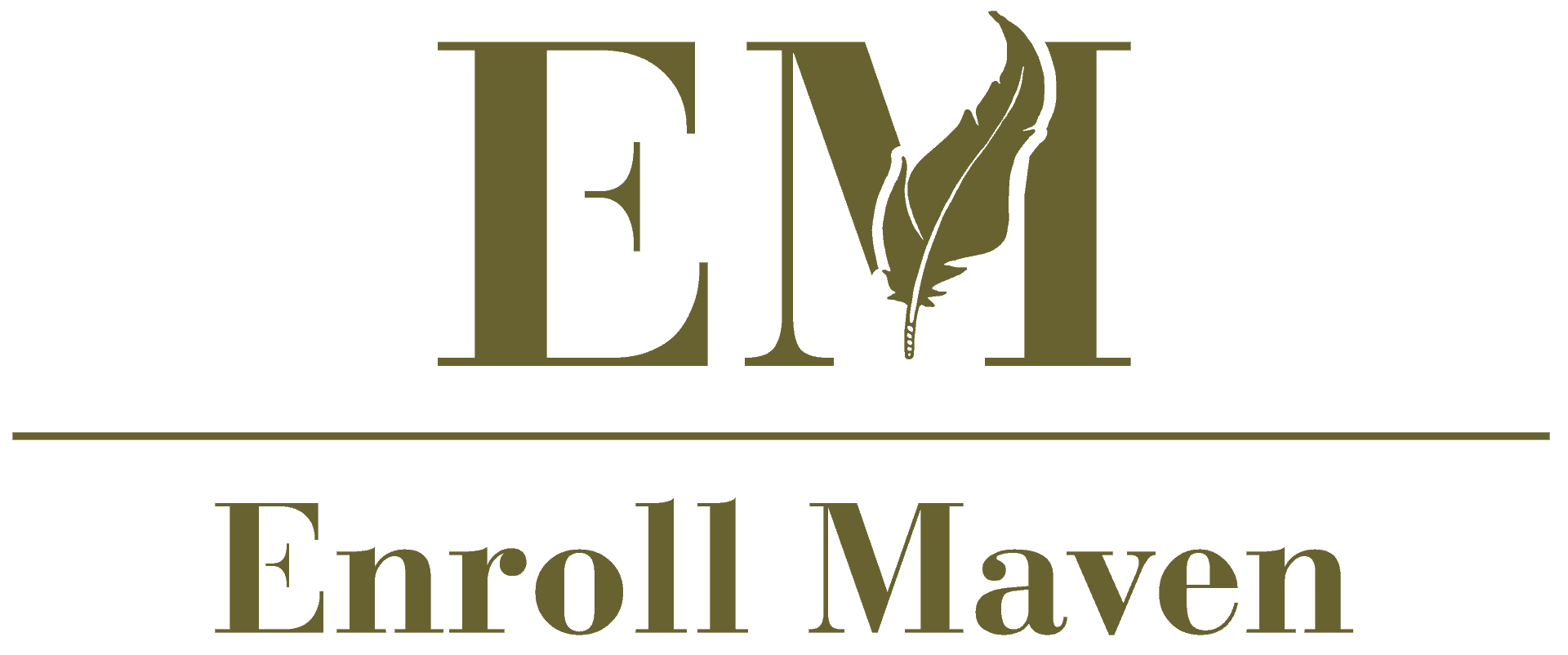In the ever-evolving landscape of education, online education blogs have emerged as powerful platforms for sharing knowledge, insights, and experiences. These blogs serve as dynamic hubs where educators, learners, and enthusiasts can explore a wide array of topics, from innovative teaching strategies to the latest trends in educational technology. For those looking to navigate the world of online education, these blogs act as trusted guides, offering valuable resources, expert advice, and real-life anecdotes that cater to diverse learning styles and career aspirations. Whether you’re a seasoned educator seeking inspiration or a newcomers wanting to dip your toes into the waters of online learning, there’s no shortage of exceptional online education blogs to explore. In this article, we’ll dive into what makes a great online education blog, uncover the factors that contribute to its success, and reveal the key considerations for anyone looking to start their own. From understanding your audience to mastering SEO optimization techniques, this comprehensive guide will equip you with the tools needed to create an online education blog that stands out.
Key Takeaways
- Deliver high-quality, engaging content that resonates with your audience, covering topics like effective learning strategies and college preparation tips.
- Optimize for SEO to enhance visibility and attract the right audience, incorporating keywords naturally.
- Create a user-friendly design ensuring accessibility, responsiveness, and quick loading times.
- Leverage social media to connect with your community, share content, and foster engagement.
- Foster a loyal community through interactive features, discussions, and events.
- Use storytelling effectively to build trust and relatability with personal anecdotes and case studies.
- Establish a clear mission statement to guide content creation and attract like-minded readers.
- Incorporate multimedia elements to cater to diverse learning styles and keep content dynamic.
- Collaborate with experts to add credibility and diverse perspectives to your content.
- Monitor and adapt based on analytics to refine strategies and stay ahead of trends.
What Makes a Great Online Education Blog?
A great online education blog is one that resonates with its audience, provides valuable insights, and stands out in a crowded space. Here’s what defines such a blog:
1. Targeted Content
Focus on a specific niche or audience. Whether catering to students, parents, educators, or professionals, tailor content to meet their unique needs. Offer guides, tips, and resources that solve their problems or answer their questions.
2. SEO Optimization
To rank higher and attract more readers, ensure your blog is SEO-friendly. Use relevant keywords, optimize titles and meta descriptions, and create content that answers popular questions in the education sector. Regularly update posts with fresh content to keep your site active in search engine rankings.
3. Engaging Visuals
Visuals like infographics, charts, and videos make content more accessible and engaging. Use high-quality images and videos to complement your written content, especially for topics like learning strategies or college prep.
4. Consistent Tone and Voice
Build trust with your audience by maintaining a consistent tone. Whether it’s motivational, informative, or conversational, stick to a style that resonates with your readers. Authenticity helps establish credibility and keeps visitors coming back.
5. Call-to-Action Strategies
Encourage interaction by asking readers to leave comments, share posts, or join discussions. Feature guest posts from experts or educators to add diverse perspectives and keep the content fresh.
6. Cross-Promotion and Partnerships
Collaborate with other education platforms or bloggers to cross-promote content. Share posts on social media, participate in educational forums, and leverage email marketing to grow your audience.
7. Regular Updates
Consistency is key. Publish regular, high-quality content to keep your audience engaged and signal to search engines that your site is active and reliable.
8. Community-Building Elements
Create spaces for discussion and collaboration. Host webinars, Q&A sessions, or workshops to connect with your audience and provide them with exclusive insights.
By combining these elements, a great online education blog not only educates but also inspires and connects with its readers, establishing itself as a go-to resource in the field.
Factors That Make an Online Education Blog Successful
An online education blog can achieve sustained success by focusing on several key factors:
- Targeted Audience Focus : Tailor content specifically for students, educators, parents, or professionals in the field of education. Understanding the audience helps in creating relevant and impactful content.
- High-Quality Content Creation : Publish well-researched, informative, and engaging articles. Guest posts from industry experts can add credibility and diverse perspectives.
- Consistent Posting Schedule : Maintain regularity in publishing content to keep the audience engaged and establish trust over time.
- Search Engine Optimization (SEO) : Optimize content with relevant keywords, craft compelling meta titles and descriptions, and incorporate internal linking to enhance visibility and ranking.
- Social Media Promotion : Actively share blog content on platforms like Facebook, Twitter, and Instagram. Engage with followers and encourage social sharing to expand reach.
- Monetization Strategies : Explore affiliate marketing, sponsored content, or ad placements while ensuring editorial integrity is maintained.
- Community Building : Foster engagement through forums, Q&A sections, or comment discussions to create a loyal community around the blog.
- Trend Awareness : Stay updated with the latest developments in online education to provide timely and relevant content.
- Multimedia Integration : Incorporate videos, infographics, and podcasts to enhance content accessibility and engagement.
- Long-Term Vision : Focus on building a sustainable presence by aligning actions with long-term goals and continuously seeking feedback to improve.
By combining these strategies, an online education blog can effectively attract and retain its target audience, establish itself as a valuable resource, and achieve lasting success.
Top Considerations for Starting an Online Education Blog
Starting an online education blog requires careful planning and strategic thinking to ensure its success. Here are the key considerations to keep in mind:
1. Define Your Niche
Your blog needs a clear focus to attract and retain a dedicated audience. Identify a specific area within the education sector that interests you, whether it’s academic success, career guidance, educational technology, or parenting tips. Research your competition and look for gaps in the market to position yourself uniquely.
2. Choose the Right Platform
Decide between self-hosting your blog (using platforms like WordPress) or using a hosted solution like Medium or Substack. Self-hosting offers more control and customization but requires technical expertise, while hosted platforms simplify setup but limit flexibility.
3. Optimize for SEO and Accessibility
Ensure your blog is optimized for search engines by researching keywords, creating high-quality content, and building internal links. Make your site mobile-friendly and ensure it’s accessible to users with disabilities by implementing features like screen readers and alt texts for images.
4. Develop a Content Strategy
Create a content calendar to stay organized and consistent. Plan topics ahead of time and mix different content types, such as blog posts, videos, podcasts, and infographics, to cater to various learning styles. Use tools like Asana or Trello to manage your schedule effectively.
5. Monetize Thoughtfully
Once your blog gains traction, explore monetization options like affiliate marketing, display advertising, and sponsored content. Ensure your content remains valuable and trustworthy to maintain audience trust. Diversify your income streams while avoiding overwhelming your readers with ads.
6. Build and Engage Your Audience
Promote your blog on social media platforms, engage in educational forums, and start an email newsletter to capture leads. Respond to comments and messages to build rapport with your audience. Consider guest blogging on related sites to expand your reach and drive traffic.
7. Track and Analyze Performance
Use analytics tools like Google Analytics or SEMrush to monitor your blog’s performance. Track metrics such as page views, bounce rate, and conversion rates. Experiment with A/B testing to optimize headlines, CTAs, and content layout for better engagement and results.
8. Stay Updated and Relevant
Keep up with industry trends and updates in education and blogging. Attend webinars, read influential blogs, and join online communities to stay informed. Regularly update your content to reflect new developments and maintain your audience’s interest.
9. Protect Your Content and Privacy
Set up proper copyright and plagiarism policies to protect your original content. Implement a privacy policy if you’re collecting user data, especially if you’re using cookies or tracking tools. Ensure compliance with data protection regulations like GDPR or CCPA depending on your audience’s location.
10. Focus on Long-Term Success
Think beyond short-term gains and focus on building a sustainable blog that resonates with your audience for years to come. Invest time in relationships with readers and fellow bloggers to foster a supportive online community around your brand.
By considering these factors and staying committed to your vision, you can create a thriving online education blog that makes a meaningful impact in the digital space.
Key Components of a Successful Online Education Blog
A successful online education blog is built on several critical components that work together to engage readers, deliver value, and establish authority in the niche. Here’s a breakdown of what makes these blogs stand out:
1. High-Quality, Consistent Content
The foundation of any successful blog lies in its content. Regular, well-researched, and engaging posts keep readers coming back. Topics should align with the audience’s interests, such as effective learning strategies, college preparation tips, or academic success stories. To optimize for SEO, incorporate keywords like “effective learning strategies” or “college preparation tips” naturally into your content.
2. SEO Optimization
While content is king, SEO ensures your blog reaches the right audience. Use tools like Google Keyword Planner to identify relevant keywords and craft compelling meta descriptions. Optimize images with alt texts and ensure your site loads quickly. Links to authoritative sources like Enroll Maven’s SEO guidelines can further enhance your strategy.
3. User-Friendly Design
A seamless user experience is non-negotiable. Ensure your blog is mobile-responsive, easy to navigate, and fast-loading. Features like a search bar and intuitive categories help users find exactly what they’re looking for. Check out our UI/UX design tips for more insights.
4. Social Media Integration
Social media isn’t just a marketing tool—it’s a community builder. Share your blog posts on platforms like Instagram, Twitter, and LinkedIn. Encourage readers to engage by asking questions or hosting Q&A sessions. Tools like social media management software can help streamline your efforts.
5. Community Engagement
Building a loyal community fosters long-term engagement. Host webinars, forums, or live events where readers can interact with experts. Create spaces for discussion, like comment sections or dedicated forums, to foster connections. For example, our education forum is a great place for meaningful conversations.
6. Personalized Storytelling
Stories resonate deeply with readers. Share personal anecdotes, case studies, or guest posts from educators. This approach builds trust and relatability. For instance, check out our student success stories to see how storytelling can inspire.
7. Clear Mission Statement
A strong mission statement defines your purpose and guides your content choices. At Enroll Maven, our mission is to empower learners with knowledge and resources. This clarity helps us stay focused and appeals to readers who share our values.
8. Multimedia Elements
Engage readers with videos, infographics, and podcasts. These formats cater to different learning styles and keep content fresh. Explore our multimedia content strategies for creative inspiration.
9. Expert Collaborations
Partnering with educators, influencers, and thought leaders adds credibility and diverse perspectives. Featuring guest posts or interviews, like our expert interviews , enriches your content and attracts new readers.
10. Analytics and Adaptation
Monitor your blog’s performance with tools like Google Analytics. Use this data to refine your strategy, whether it’s adjusting topics or optimizing ads. Stay adaptable to evolving trends and audience preferences.
By combining these elements, you can create an online education blog that not only informs but also inspires and connects with your audience.
Essential Elements of a Successful Online Education Blog
To create a successful online education blog, several key elements must come together to engage readers, provide value, and establish authority in the niche. Below are the critical components that contribute to a thriving online education blog:
1. High-Quality, Relevant Content
The foundation of any successful blog lies in its content. Publish original, well-researched articles that address the needs of your target audience. Topics should include:
Ensure content is optimized with keywords like “online education blog” while maintaining readability and engagement.
2. Interactive and Engaging Features
To keep readers coming back, incorporate interactive elements that enhance user experience:
These features foster a loyal audience and encourage social sharing.
3. SEO Optimization
A successful online education blog must rank well in search engine results. Implement the following SEO strategies:
4. Strong Community Building
Fostering a community around your blog can significantly increase engagement and loyalty:
This approach helps build trust and fosters long-term relationships with your audience.
5. Regular and Consistent Updates
Consistency is key in maintaining reader interest. Establish a publishing schedule and stick to it:
Regular updates keep your content fresh and ensure your blog remains a go-to resource for readers.
6. Call-to-Action Strategies
Guide readers toward taking action with clear CTAs:
Effective CTAs can significantly boost conversions and revenue streams.
By combining these elements, you can create an online education blog that not only educates but also builds a loyal community of engaged learners and educators.
Key Features of a Successful Online Education Blog
To create a successful online education blog, focus on these essential elements:
- Engaging Content :
- Offer valuable insights, tips, and resources tailored to students, parents, and educators.
- Write in a conversational yet professional tone to foster connection.
- Cover diverse topics like study habits, test prep strategies, and career advice to appeal to various audiences.
- SEO Optimization :
- Use keywords like “online education,” “student success,” and “education tips” naturally throughout your content.
- Optimize images with alt text and ensure your blog is mobile-friendly.
- Regularly update content to stay relevant and improve search engine rankings.
- Multimedia Integration :
- Incorporate videos, infographics, and podcasts to cater to different learning styles.
- Use tools like Canva or Adobe Spark to create visually appealing graphics.
- Add interactive elements like quizzes to enhance user engagement.
- Community Building :
- Create forums or discussion groups where readers can share experiences and ask questions.
- Feature guest posts from educators or students to diversify perspectives.
- Host webinars or live Q&A sessions to build trust and authority.
- Consistent Branding :
- Use a consistent color scheme, font, and logo across all posts.
- Include a bio section with your credentials and contact information.
- Promote your blog on social media platforms to reach a wider audience.
- Competitor Analysis :
- Stay updated on competitors like Education.com and Coursera .
- Learn from their strategies but always maintain your unique voice and focus on Enroll Maven’s mission.
By combining these elements, you can create a blog that stands out in the online education space while providing genuine value to your readers.
Explore Enroll Maven to discover more resources and strategies for online education.









0 Comments